Apple iPhone 6s vs LG G4
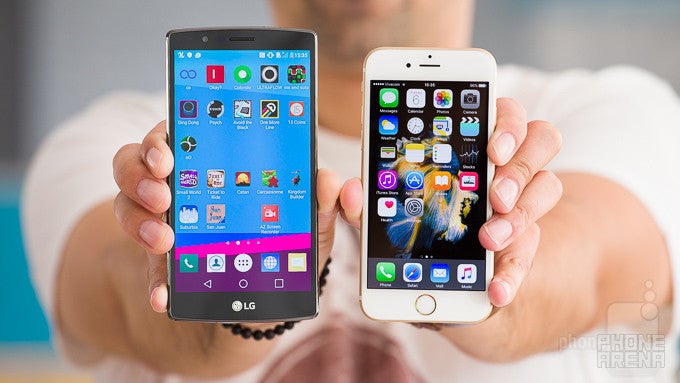
Introduction
The iPhone 6s is already out and it is a worthy successor to the iPhone 6. Although it is nearly identical on the outside, it represents what's possibly the biggest S-cycle upgrade in the device's history – the iPhone 6s is a major refinement with standout features such as the new 3D Touch technology built into the display, an upgrade to a 12-megapixel camera that's capable of recording 4K video, and a brand new Apple A9 system chip.
Looking at various Android alternatives to Apple's flagship, the LG G4 certainly attracted our attention. LG's leather-clad smartphone may lack the metallic sheen of its rival, but it stands out with a unique design touch, a big 5.5-inch display, a 16MP rear cam with an arsenal of extras, and the increasingly rare removable battery.
Having these very interesting high-end devices in our hands, we'll go through a detailed comparison of the two to help you understand what makes Apple and LG's flagships so very interesting, but different nonetheless.
Design
Two starkly different design philosophies in action.
The iPhone 6s is a fancy smartphone, there's no second opinion about that. It has an aluminum unibody build, and the 7000 Series aluminum alloy in use is stronger than the kind of aluminum used for the previous iPhone generation. In addition, the glass covering the phone's LCD screen is strengthened by a dual ion-exchange process, making it resistant to scratching and cracking.
What does the LG G4 have to stand against that? Well, the smartphone either comes in plastic, or with a vegetable-tanned leather back (complete with tasteful stitching!) that makes for an interesting and rare look. While the iPhone 6s is completely flat, the LG G4 features a Slim Arc design that makes it feel good in the hand, despite its imposing dimensions. While plastic may look less sophisticated, the G4 certainly doesn't come off as cheap, especially if you have the leather back version. However, you should know that the G4's leather material has proven to suffer wear and tear as time goes by, so it should be handled with care.
The keys and switches of the iPhone 6s — the volume keys, power key, and mute switch — are located on the sides, while the home button is positioned on the front, below the display. This is in stark difference to the LG G4, which has the power and volume keys on its back side. The arrangement is easy to get used to, but it isn't superior, and it does not allow for operating the buttons while the phone is laying on its back. Although you can still wake its screen with a double tap.
Dimensions-wise, the iPhone 6s measures 5.44 x 2.64 x 0.28 inches (138.3 x 67.1 x 7.1 mm) and weighs 5.04 oz (143 g), making for a handset that's reasonably compact. The LG G4 is a fair bit bulkier at 5.86 x 3.00 x 0.39 inches (148.9 x 76.1 x 9.8 mm) and 5.47 oz (155 g) of weight. It goes without saying that the iPhone 6s is easier to hold and operate with one hand, being a smaller handset with less screen real estate than the LG G4. However, LG's behemoth is efficiently designed and doesn't come across as too big or heavy for a 5.5-incher.
A possible advantage that the LG G4 may have for a number of users out there are the abilities to pop in a microSD card to expand the storage and to replace the empty battery with a fully charged one on a whim. The iPhone 6s can't have its physical storage expanded and can't have its battery replaced on the fly, but it's up to you to decide whether that's such a big deal or not.
Display
The iPhone 6s has a finely tuned LCD screen with pretty accurate colors. The LG G4's is bigger and with more pixels per inch, but its otherwise vivid colors aren't as accurate.
Screen size is another area of difference between the iPhone 6s and the LG G4. The Apple flagship has a 4.7-inch IPS LCD screen with a resolution of 750 x 1334 pixels, which adds up to a pixel density of 326 pixels per inch. LG also used an IPS LCD panel, but a bigger one, with a lot more pixels on it. The LG G4's 5.5-inch screen has a resolution of 1440 x 2560 pixels, resulting in a pixel density of 538 pixels per inch. Despite the significant difference in pixel density, both displays are very sharp and deliver no-compromise detail, although the G4 does have a slight advantage in this respect.
Brightness response is an important characteristic to be aware of when using a smartphone under bright light or in the dark. We measured a very good maximum brightness output of 550 nits on the iPhone 6s, which makes its display visible and usable under bright light. The screen on the LG G4 exhibited a lower maximum brightness of 454 nits, which means things are good for the most part, but you may have troubles using it under bright light, as it will appear a little dim. On the other end, the minimum brightness levels we measured stand at 6 nits for the iPhone 6s and 2 nits for the LG G4. Comfy bed-reading is an option on both, but the iPhone 6s could have gone a little lower.
Moving on to white balance and color reproduction, the iPhone 6s boasts a color temperature of around 7050K, which is fairly close to the 6500K reference mark, where whites appear neutral – neither warm, nor cold. As a result, the iPhone 6s only shows a hint of blue, while, at 8031 K, the LG G4 appears noticeably colder. On a related note, the iPhone 6s exhibits lower Delta E color and grayscale error values than the LG G4 — simply put, the iPhone's display is the more neutral and more color-accurate among the two.
Gamma response is a metric we use to assess a display's contrast levels. Apple has been a gamma champ for a long time, so it's not surprising that the iPhone 6s' gamma stands at a near-perfect 2.23, meaning its luminance is very accurate. But LG G4's screen does not lag behind, judging by the 2.24 gamma value that we measured. In short, both screens' contrast response is excellent, but the iPhone 6s' gamma curve is still a bit closer to ideal.
Given that both smartphones have IPS LCD screens and are of generally great quality, one would expect them to have outstanding viewing angles. The truth isn't as straightforward, for the iPhone 6s exhibits lower contrast distortion, but the LG G4 gives off much less color error when viewed at a 45-degree angle. Then again, the G4's color reproduction is already far from the truth as it is, so the lower values don't really count here. Anyway, both displays remain very viewable and behave quite favorably at extreme angles, so there's that!
Interface and Functionality
Choosing between Android and iOS isn't as hard as it was, but 3D Touch on the iPhone 6s is just dandy!
Android and iOS may be two very different beasts, yet different as they are, we can hardly think of a time where the two have been more alike. Over the years, Apple and Google have successfully matched the essential functionality of the two operating systems. However, the iPhone 6s enjoys an exclusive piece of functionality — 3D Touch — that no other smartphone has entirely replicated (though Huawei tried). 3D Touch enables two new gestures across iOS 9: Peek and Pop. Peek corresponds to a slight press on the screen, while Pop is engaged when the user presses harder.
Throughout most of iOS 9's built-in applications, Peek (a light press) causes a small preview window to appear – a preview of the item you have pressed on. For example, in Mail, you can press on an email to reveal a preview of that message. Lifting your finger off the screen will simply cause the preview to disappear. This way, you can quickly glance through your emails without having to open and close them one by one. If you're already peeking into a message, a harder press will cause it to instantly “pop” onto your screen. It's a nifty and useful trick that we like to use.
Another feature the iPhone 6s has over the LG G4 is fingerprint security, courtesy of the former's built-in Touch ID sensor. Your fingerprint may serve as an alternative to a lock screen PIN, but is also used to authorize payments made using Apple Pay. In contrast, the absence of a fingerprint scanner on the LG G4 is bad future-proofing and a turn-off to Android lovers who would like to use the Android Pay system.
However, some of the LG G4's functionality is still unmatched by the iPhone 6s and iOS 9. Such standout features include Knock On and Knock Code, the former letting you lock and unlock the phone with two taps on its screen, the latter locking and unlocking the device with a personalized tap pattern. Moreover, the LG G4 supports custom themes, and we'd like to mention the QSlide apps and Dual Window functionality, which let you use miniaturized apps as floating windows, or use two apps in split-screen mode. The iPhone 6s' multitasking feels limited in comparison, for all it has to offer is a fast app switcher. Also, LG's smartphone features an IR Blaster that lets it fill in as a remote control for smart TVs.
Processor and Memory
The iPhone 6s is still the fastest smartphone out there, trumping the LG G4's graphics performance.
Being premium-tier devices, both the iPhone 6s and LG G4 pack formidable hardware horsepower. Let's have a look at the iPhone 6s first. The Apple flagship is powered by a 64-bit A9 SoC, with a dual-core CPU, affectionately nicknamed "Twister", that goes up to 1.8 GHz. A PowerVR GT7600GPU is keeping the CPU company, along with 2GB of LPDDR4 memory. Storage-wise, the phone comes in 16GB, 64GB, and 128GB variants. There is no option for memory expansion via microSD card. Those settling for the 16GB variant will be at a certain disadvantage, for shooting 4K video, taking 12MP photos, and loading up on apps and music will quickly eat up storage space.
The LG G4 employs a Qualcomm Snapdragon 808 SoC that contains a hexa-core CPU, with two high-performance ARM Cortex-A57 cores running at up to 1.8GHz and four power-saving ARM Cortex-A53 cores handling lighter loads. The Adreno 418 GPU is also part of the SoC package. 3GB of LPDDR3 RAM are present. The phone can be had with 32GB of storage, which can be expanded via microSD card.
In our iPhone 6s review, we flat-out proclaimed that this is the fastest smartphone we've used to date. This might sound puzzling, considering the LG G4's CPU has more cores and whatnot. But the truth is that the iPhone 6s moves in a constantly swift and reliable manner, while its 3D graphics benchmark scores are the most impressive that we've ever seen. Powerful as it is, the LG G4 has a hard time keeping up in 3D games, due to its comparatively underpowered graphics unit and very high display resolution. See, the iPhone 6s is able to maintain a staggering 56 average FPS on GFXBench's demanding Manhattan on-screen test, while the LG G4 is barely even there with just 9.4 average FPS. There is no discernible difference in image quality between the two, despite the LG G4 rendering the scene at almost twice the resolution.
The iPhone 6s' performance advantage is also evident during casual use. iOS just seems to dance on the screen without a hint of stutter, while the LG G4 feels ever so slightly laggy at times and certainly doesn't boast the same utterly impressive speed and responsiveness to it. Still, for such a feature-packed phone running at a very high-resolution, LG's flagship is fluid enough and using it is no turn-off.
Internet and Connectivity
Both phones deliver the total package, but Safari on iOS is a more fluid browser than Chrome on Android.
Both the iPhone 6s and LG G4 are connectivity beasts, featuring support for standards like Cat. 6 LTE, aGPS with GLONASS, Bluetooth, dual-band Wi-Fi, and NFC, among everything else that's in there! However, the LG G4 also supports display connections via DLNA and 4K video output via SlimPort. The iPhone 6s uses a Nano SIM card, while the G4 uses the bigger Micro SIM cards, just so you know.
Where web browsing is concerned, Mobile Safari's excellence in surfing the web is proven. All of its endearing characteristics, such as speedy page loads, buttery-smooth performance, and intelligent navigational controls are present on the iPhone 6s. The experience is further enhanced with the addition of 3D Touch. Using light 3D Touch on a link, its Peek feature kicks in to show us a small preview into what we’re targeting – as opposed to blindly committing by pressing on the link like we normally would. It's a small, but useful feature that one might keep using in the long term.
Browsing on the LG G4 feels pretty great as well, especially with that vibrant 5.5-inch display that's able to show more content.The LG G4 comes with its custom browser, but we'd suggest that you use Google's Chrome, as it tends to be speedier. With it, pages load quickly, while navigation actions, such as scrolling and zooming, are reasonably snappy and fluid.
Camera
These are some of the finest cameraphones on the market, period.
With the iPhone 6s, Apple delivered a seemingly modest, but very welcome upgrade to a 12-megapixel rear camera (up from 8MP) with 1.22µ pixels, along with a generous increase to 5 megapixels on the front cam (from just 1.2MP). Accompanying the rear camera, we have a dual tone LED flash, a 5-element lens with an aperture of f/2.2, phase-detection autofocus, a hybrid IR filter, BSI, and a sapphire crystal lens cover. Camera specs aside, the most notable new addition seems to be 4K (3840 x 2160) video recording, which puts the iPhone's camcorder on par with high-end Android phones, such as the LG G4.
LG's hero phone goes for a more generous 16MP cam at the back, with wider, f/1.8 aperture at that, and an impressive 8MP front camera for high-quality selfies. The rear camera is kept company by a color spectrum sensor, a single LED flash, and a laser autofocus system. The color spectrum sensor is located right below the LED flash on the back of the phone. It's there to determine the source of light and adjust white balance accordingly. Optical image stabilization is present for both still images and videos, unlike on the iPhone 6s, which lacks OIS.
Being the ambitious cameraphones they are, both the iPhone 6s and LG G4 feature straightforward, yet elaborate camera apps that take very good photos in Automatic mode, which is the mode users typically opt for. An interesting new feature for the iPhone 6s that the LG G4 happens to lack is Live Photos, which turns photos into short video-like highlights that one can view right inside the gallery. Just hard-press on a particular picture, and the Live Photo will come to life, complete with sound. The LG G4, however, has a complete Manual mode with options to adjust white balance, focus, exposure compensation, ISO, and shutter speed.
Image quality
With the iPhone 6s, colors tend to favor warmer tones, which makes photos look pleasing to the eye in the majority of cases. There’s also good and even handling of exposure and dynamics range. Still, the LG G4 tends to preserve colors that seem closer to what's seen in real life. Photos from the LG G4 don't look as sharp and contrasting as those from the iPhone 6s, rather they are more tame in character – some might favor the former approach, others may favor the latter.
The iPhone 6s and the LG G4 expose photos differently. Unless you tap on a particular area of your image, the LG G4 would prioritize the center of the frame, which may lead to overexposure of areas that are already bright and near the corners. On the other hand, the iPhone 6s uses pattern metering, and as a result, images might appear darker in the center, but with highlights away from it exposed correctly. In any case, if you feel like your photo could use a bit more exposure, the iPhone allows you to tweak it easily.
Indoors, under artificial lighting, the iPhone 6s tends to sprinkle some yellow hues to the shot, producing warm-looking images, although not intensely so. Details retain their sharpness, but shooting in complete darkness, we noticed that the phone often struggles to lock a correct focus. The latter is hardly a problem for the LG G4 with its laser-assisted auto-focus, and color reproduction is once again superb, but its low light shots do come off looking smudgier. However, making good use of the manual mode's shutter speed and ISO lets one come up with properly exposed photos that reveal additional detail. But one would also need a tripod or a steady hand for accomplishing the best results.
Yet, when the LED flash has to kick in, the one on the iPhone 6s does a much better job illuminating the scene. Not only is the module a dual LED one, it lights up the scene in a pleasantly neutral tone, while the LG G4 makes the scene look yellow-green. Still, for those dark times where no light is present, the G4's LED flash is a passable solution.
With such nice front cameras on both of them, both the iPhone 6s and the LG G4 take great selfies. The color balance characteristics we described above are preserved, with the iPhone 6s going for warm tones and the LG G4 striving for realistic colors. The LG G4 has a wider viewing angle, capturing more from the scene or fitting more faces in the frame. Also, both devices have a clever solution in store for those times when you have to take a selfie in the dark. You can have their displays illuminate your face with a full brightness blast, substituting for an LED flash. Theoretically, Apple's implementation is superior, as the display controller chip allows the screen to glow three times more brightly than its typical maximum, which produces a nice screen flash. Plus, the temperature of the flash is adjusted in accordance to the scene to produce a more natural image.
However, we can't say we're thrilled with the iPhone 6s results. Although the screen manages to illuminate more from the scene and its surroundings than the LG G4, the final image is downright noisy and smudgy-looking, and the colors are off. Moreover, the iPhone 6s won't let you see your face illuminated in the viewfinder. The LG G4, though, not only lets you have a peek at your face without blasting your eyes with light in the process, but the selfie is much closer to what you'd expect from a camera with a proper flash.
Video quality
We did mention that both the iPhone 6s and LG G4 are able to record 4K (UHD) resolution video, correct? Well, a key difference here is that the Apple flagship is able to record UHD videos of unlimited length (limited only by the amount of free storage you have), while the LG G4 is limited to 5 minutes per video. 4K footage from both phones, shot at 30 frames per second, looks impressively detailed.
If you like that silky smooth 60FPS motion in your videos, you have that option on the iPhone 6s, although footage is limited to 1080p resolution. Disappointingly, the LG G4 only goes up to 30 FPS in 1080p regardless of the video resolution setting. We must note that changing the video recording resolution through the Settings menu on the iPhone 6s is not a very efficient solution, as we'd much rather do it from within the camera app itself, like on the LG G4.
Overall, video quality is great from both smartphones, as they deliver good detail and even exposure. The iPhone 6s favors a warm look, while the LG G4 tries to stick to a more natural color reproduction. Also, we noticed that the LG G4 has a wider field of view, while the iPhone 6s has a narrower one, making videos look as if they're slightly zoomed in.
Although the iPhone 6s has digital image stabilization and the LG G4 has optical image stabilization, we have a hard time finding OIS superior to Apple's solution. Held steadily, both smartphones output steady video and shaking is in control, but footage from the iPhone does look a bit smoother. We should also mention that the LG G4's continuous autofocus is very slow. Rather than kicking in automatically, at times we must touch the screen to change the focus while recording. After doing so, an on-screen icon to activate continuous auto-focus shows up. As for voice recording, both handsets leave something to be desired, as noise cancellation is good, but voices coming in from behind the camera sound weak and thin.
Multimedia
The iPhone 6s has a tighter integration with iTunes and music streaming, but the LG G4 is louder and has a bigger screen.
Watching photos and videos is a joy on both smartphones, for they offer a fluid and feature-rich experience. Basic photo editing can be done inside iOS' and the G4's built-in gallery apps, although the free Apple iLife suite, available in the App Store, makes for an editing package of better quality than what's available on the LG G4 out of the box. Music and video playback is great on both devices, although iOS's stock music player has much tighter iTunes and Apple Music integration than the LG G4 player's relationship with Google Play Music. That only matters if you're bought into the respective services, though.
Measuring loudspeaker loudness, the LG G4 (79dB) is a full 9.4dB louder than the iPhone 6s (69.6dB), although we liked the sound coming out of the Apple flagship more — it's simply livelier, with a nice depth and clarity to it. Even really nice smartphone speakers, such as the BoomSound speakers on the HTC One M9, sound somewhat muddy next to it. We can also say the same for the bundled earphones. The Apple EarPods easily outclass the LG G4's in terms of sound quality. Not that they are perfect or anything, but LG's earphones sound downright dull in comparison.
Watching video is a fun thing to do with the iPhone 6s. The 4.7-inch screen isn't as large and immersive as the LG G4's, but a zoom-in feature allows you to bring the action a little closer to your eyes. Alas, the feature doesn't work outside the gallery and built-in video player. You probably won't have to resort to such things with the LG G4, as it has a much bigger 5.5-inch display. Even if its colors are quite overblown, we must say that watching videos on this screen is a pleasant experience, especially if you happen to have some UHD content to really make all those extra pixels count. Additionally, the LG G4 lets one float a video on top of everything else going on, so you don't have to miss a beat if you need to do something else while watching video.
Call quality
Nothing outstanding here, just clear voices to listen to.
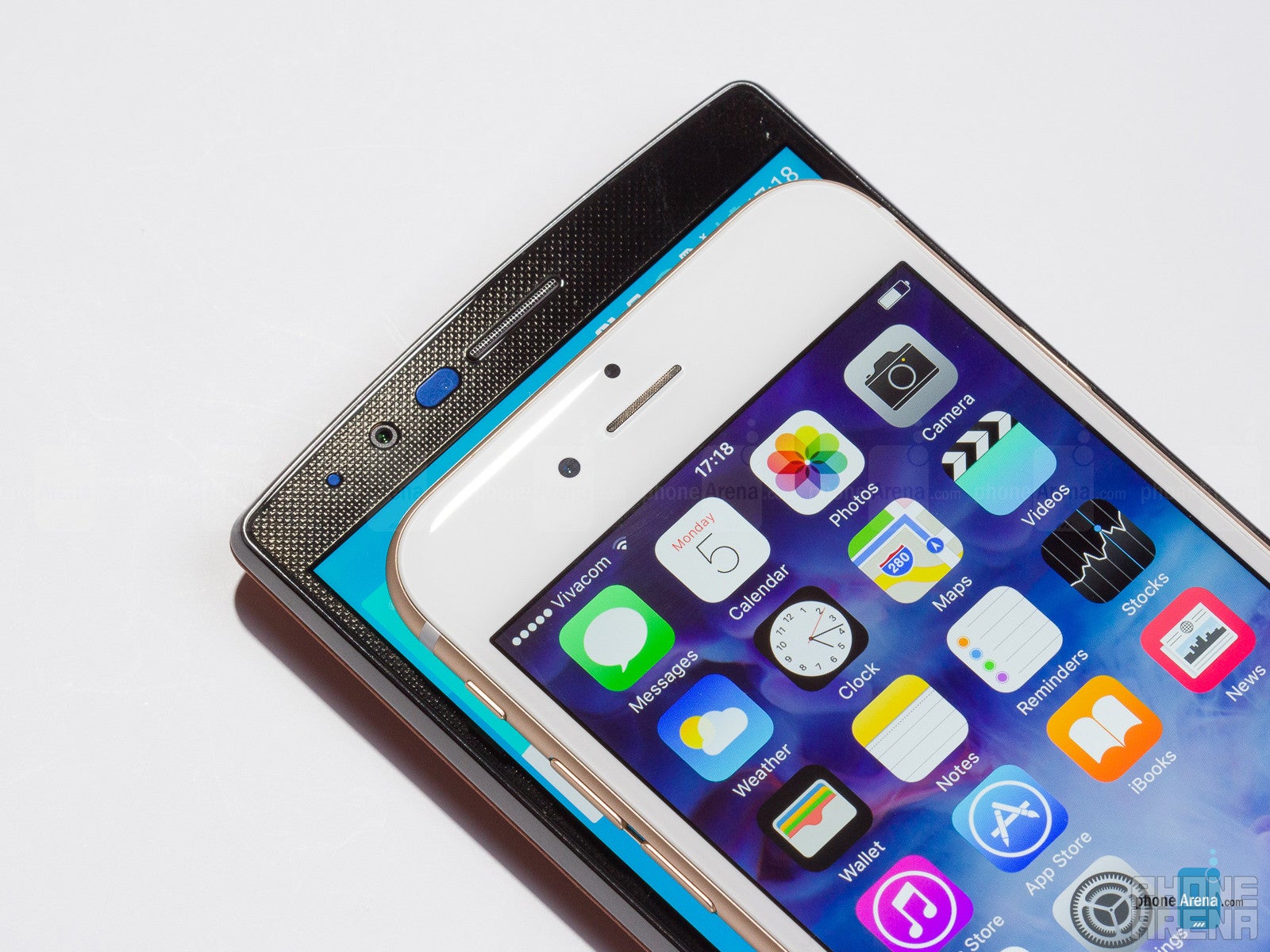
The LG G4 too gets the job done, as the earpiece and speakerphone produce strong volumes to make them useable in noisy environments. However, there’s a slight hint of distortion to voices through the earpiece that make them sound a little bit artificial, but it isn’t too terrible. On the other end of the line, things seem to sound better, as voices are audible and robust.
Battery life
The iPhone 6s is a master of efficiency, but the LG G4 makes up for that with a removable battery.
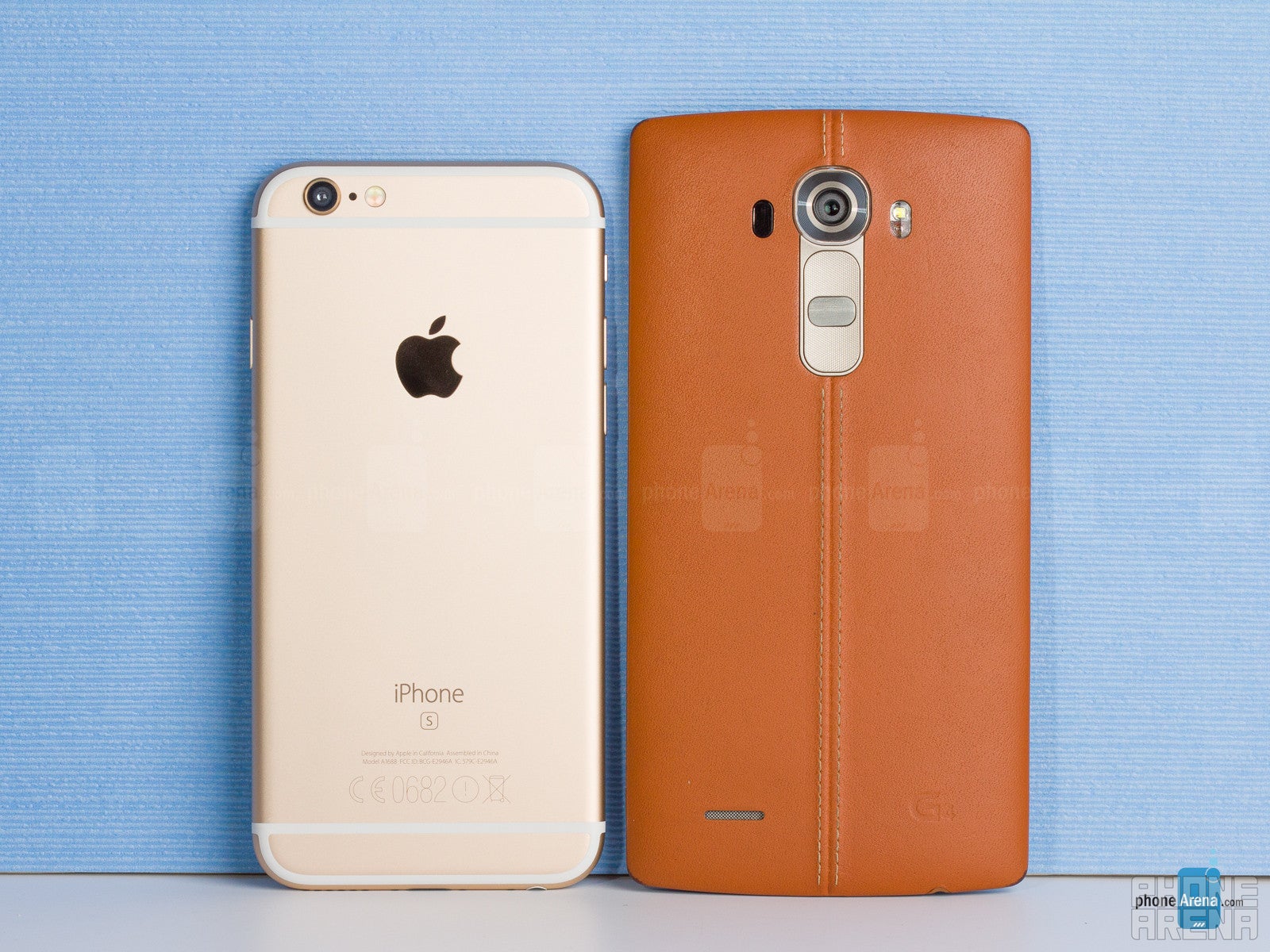
Conclusion
The iPhone 6s is a complete all-around package with little compromises and lots of polished features that work reliably. But if you aren't after the iPhone 6s' “premium” appeal, you need to consider the fact that the LG G4 presents better value for money. A solid all-around Android phone, the LG G4 costs as much as $200 less than a 16GB iPhone 6s, but has at least three things going over it — a bigger display, a more elaborate camera, and a louder speaker. But, even when we put design and user interface aside, which are both subjective characteristics, the iPhone 6s does win over the LG G4 in terms of display accuracy, sheer performance, camera consistency, app quality, and battery life. Although one can certainly learn to live with the G4's shortcomings, the iPhone 6s is consistently better in almost every regard, and demanding users will find the price premium well worth it.
Outside of the price and quality perspectives, there are many things that make the iPhone 6s and LG G4 quite unique. The iconic look of Apple's smartphones has been successfully imitated, but its pedantic level of polish and general niceness still hasn't been matched. Although high-end Android smartphones, such as the LG G4, have come close to replicating this effortlessness, they are still no match for the iPhone's consistency. However, they do present an avenue for experimenting with interesting technology and novel design decisions. The LG G4 is an endearing example of Android's freehand nature with its original look, leather back or not, and also boasts wonderful user-centric features, such as a great (but not consistently so) camera, a removable battery, and a microSD card slot. We also love the straightforwardness of its user interface, complete with LG's clever additions to Google's operating system.
Final summation? If you want the best value for money and can live with a screen that isn't highly accurate, or a user experience that isn't always fluid, you might end up pretty happy with the LG G4. But if you are an avid user and the smartphone barely exits your hand on a daily basis, we think the iPhone 6s' price premium will be worth it in every major aspect.
Apple iPhone 6s
Pros
- More accurate display
- Much faster performance
- Longer battery life
- Easier to hold in one hand
LG G4
Pros
- More sophisticated camera
- Removable battery and a microSD card slot
- Bigger display with higher resolution
- Affordable price and more storage in the base model

Follow us on Google News
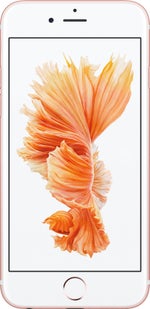
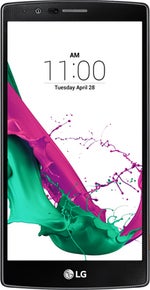




















Things that are NOT allowed:
To help keep our community safe and free from spam, we apply temporary limits to newly created accounts: